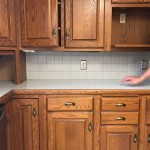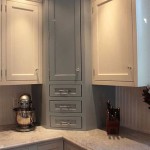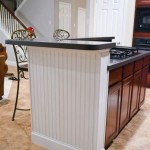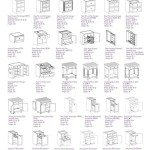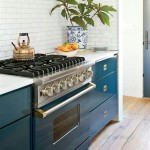Standard Height of Upper Kitchen Cabinets: A Comprehensive Guide
Upper kitchen cabinets are an essential part of any kitchen design, providing both storage space and a visual focal point. Determining the correct height for these cabinets is crucial to ensure both functionality and aesthetics. This guide will delve into the essential aspects of standard upper cabinet height, offering insights and guidelines to help you make informed decisions for your kitchen renovation or design.
Factors Affecting Cabinet Height
Several factors influence the optimal height of upper kitchen cabinets. These include:
- Ceiling height: Lower ceilings generally require shorter cabinets to maintain a balanced proportion and avoid an overwhelming appearance.
- Countertop height: The standard countertop height is 36 inches, which typically pairs well with 15-inch upper cabinets.
- Intended use: Cabinets used for storage of frequently used items, such as dishes or utensils, should be placed at a lower height for easy access.
- Personal preference: Ultimately, the height of upper cabinets should align with the user's comfort and preferences.
Standard Cabinet Heights
While personal preferences and specific kitchen designs may vary, there are generally accepted standard heights for upper kitchen cabinets. These include:
- 15 inches: This is a common height for cabinets placed above standard 36-inch countertops.
- 18 inches: Taller cabinets that add extra storage space, suitable for kitchens with higher ceilings.
- 24 inches: Used in kitchens with especially high ceilings, these cabinets provide ample storage but may require a step stool for access.
Determining the Optimal Height
To determine the ideal height for your upper cabinets, follow these steps:
- Measure the distance from the countertop to the ceiling.
- Subtract 2 inches for a 15-inch cabinet or 4 inches for an 18-inch cabinet.
- Add 2 inches for a 24-inch cabinet.
- Mark the resulting height on the wall and place the cabinets accordingly.
- Taller individuals: If the users are tall, raising the cabinets by 2-3 inches can improve reachability.
- Crown molding: If crown molding is installed, the cabinets may need to be adjusted to accommodate its thickness.
- Upper backsplash: If an upper backsplash is planned, the cabinets may need to be raised to allow for its installation.
Height Variations
In some cases, it may be necessary to adjust the standard cabinet heights. For instance:
Conclusion
Understanding the standard height of upper kitchen cabinets is essential for creating a functional and aesthetically pleasing kitchen. By considering factors such as ceiling height, countertop height, intended use, and personal preference, you can determine the optimal cabinet height that meets your needs. Whether you prefer the classic 15-inch height, the extra storage space of 18-inch cabinets, or the grandeur of 24-inch cabinets, choosing the right height will enhance the overall functionality and beauty of your kitchen.

Height Between Upper Cabinets And Counters Kitchen Elevation

Standard Upper Cabinet Height Conventions And Kitchen Cabinets Measurements Dimensions

Cabinet Countertop Clearance To Be Mindful Of When Considering Wall Cabinets

Standard Upper Cabinet Height Bulacanliving

Know Standard Height Of Kitchen Cabinet Before Installing It

Kitchen Cabinet Sizes What Are Standard Dimensions Of Cabinets

Kitchen Unit Sizes Cabinets Measurements Cabinet Dimensions Height

N Standard Kitchen Dimensions Renomart
Kitchen Renovation Size Requirements 1 Rona

Pin By Nicole On Measurements Kitchen Cabinets Cabinet Dimensions Height
Related Posts

